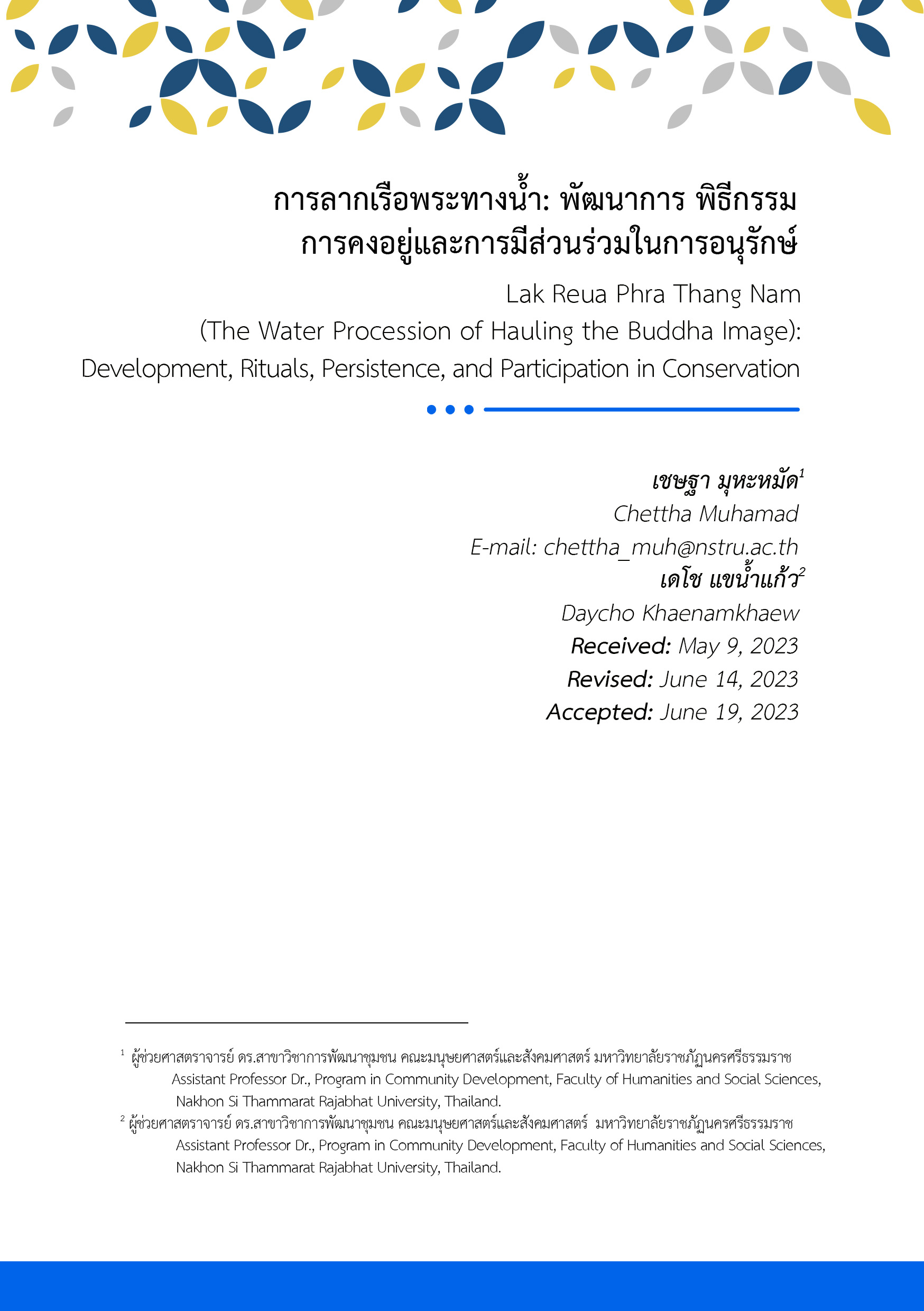Mae Chaem in the Stream of Time: The Movements of Social Forces in Mae Chaem Society during 1987-2020 แม่แจ่ม เคลื่อนตามกาลเวลา: การเคลื่อนไหวของกลุ่มพลังทางสังคมในแม่แจ่ม ระหว่าง พ.ศ. 2530-2563
Main Article Content
Abstract
Mae Chaem’s status as a Lanna cultural space arises from the negotiation of at least four social forces in Mae Chaem, namely the Lanna localism, popular movement, civil society and Pracharat. This article aims to examine the conditions and relations of the cultural struggle of Mae Chaem people as "political space" that contributes to the social, cultural and economic formation of the Mae Chaem community. This phenomenon provides knowledge constitutions as well as the possibility for each network group to interact in defining Mae Chaem District. The formation of the popular movement and Lanna localism have made Mae Chaem a cultural space and cultural tourist destination. The formation of social forces in Mae Chaem, in relation to economic expansion and social activities in Mae Chaem river basin communities, permits civil society groups to participate in the movement based on Lanna localism. When the Lanna localism and the popular movement were weakened, the civil society movement started to borrow ideas and implement social practices based on Pacharat movement. However, after the 2014 coup, the state has created Pracharat policy and attracted civil society groups to participate in the formation of the Pracharat movement. The entanglement of these four social forces has made Mae Chaem a political field as evidenced in the social practices. This article thus presents the continuity of social practices in Mae Chaem river basin communities in relation to social structures, economic bases, and politics from local to national levels.
Downloads
Article Details

This work is licensed under a Creative Commons Attribution-NonCommercial-NoDerivatives 4.0 International License.
References
Cheangsen, U. (2012). History of Kanmuang Phak Prachachon (people's politics): the ideas and practices of "political activists" in the present (Master's Thesis). Thamasat University, Bangkok.
Eoseewong, N. (1992). Tourism in Boon Bang Fai Festival and Wood Carving. Bangkok: N. P.
Hongpuak, P. (2018). Community of Practice in the Reival of Lanna Culture: Case Study of Lanna Wisdoms School (Master's Thesis). Chiang Mai University, Chiang Mai.
Nunsong, A. (2013). Rural Transformation in Northern Thailand : A Study of Common Property Management of “ Community” and “Sub-Village Cluster” in Mae Chaem District, Chiang Mai Province from 1957 to 2007 (Master's Thesis). Chiang Mai University, Chiang Mai.
Ongla, O. (2019). Thai State and the Politics of Land and Forest Management In-Case of Mae Jam Model: Ideas, Movement, and Politics (Doctoral Dissertation). Naresuan University, Phitsanulok.
Pakdeenarong, P. (2004). The Politics of Aesthetics in Pha Sin Tin Jok and the Re-invention of Mae Chaem's Culture (Master's Thesis). Chiang Mai University, Chiang Mai.
Pongnil, M. (2020). The History Movement of “Social Society” in Phayao Province, 1957-2007 (Doctoral Dissertation). Chiang Mai University, Chiang Mai.
Potjanalawan, P. (2020). The Recently Constructed Lanna: The Social History of Upper Chao Phraya Basin (1932 - 2014 A.D.). The Journal of the Thai Khadi Research Institute, 17(2), 109-144.
Sombat, U. (2006). Project of Management New Community Organization: Participation of Education History of Mae Chaem 100 Years from Muang Jam to Mea Chaem. The Thailand Research Fund (TRF).


